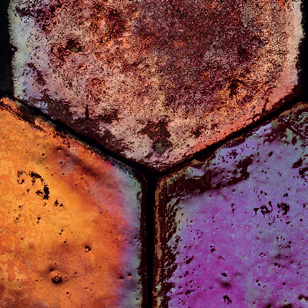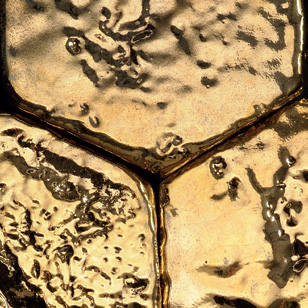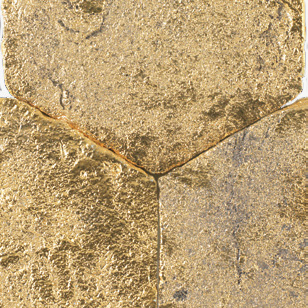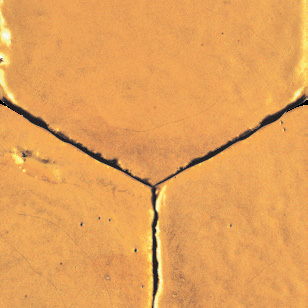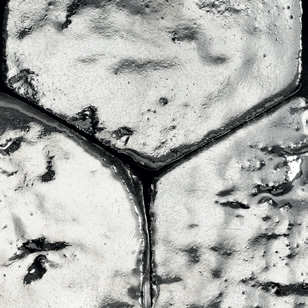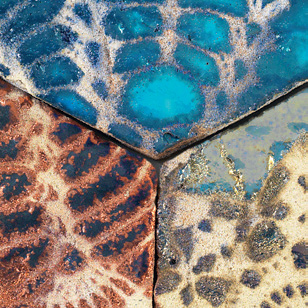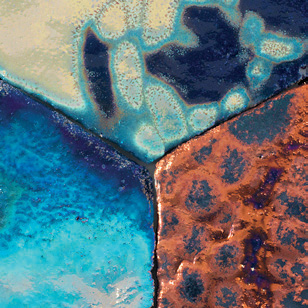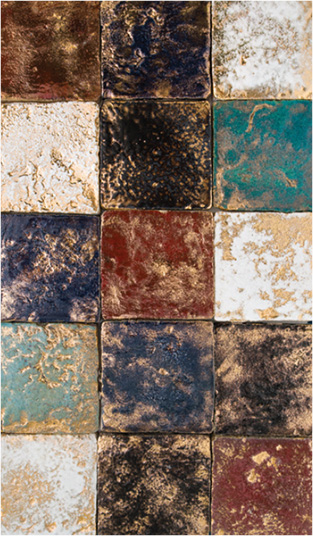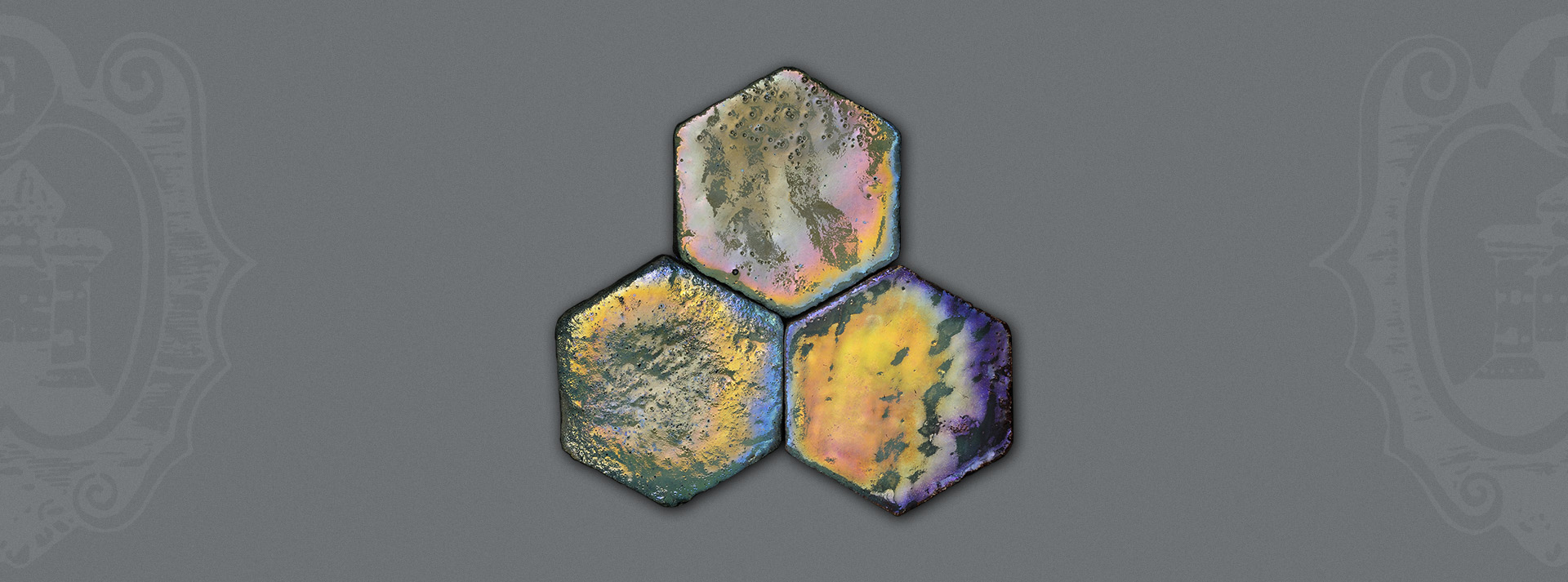
ANCIENT LUSTRE RUBBOLI 1873
Lustre tiles
The history of the lustre technique - the application of gold and ruby iridescent layers during a third firing using broom as fuel - is one of the most mysterious and fascinating in the ceramic tradition.
Features
The lustre technique originated in Mesopotamia, during the 9th century. After the Islamic invasion it spread throughout North Africa to Spain. It finally reached Italy, where some of the most important Renaissance artists, including the celebrated Mastrogiorgio from Gubbio, created incredible masterpieces
In the 17th century this technique slowly disappeared. It was Paolo Rubboli in Gualdo Tadino who rediscovered the lustre technique, using the information that in 1558 Cipriano Piccolpasso had collected in his book The Three Books of Potter’s Art.
Nowadays, Maurizio Tittarelli Rubboli, Paolo Rubboli’s great-grandson, continues the family tradition and has created this fine collection of lustre tiles specifically for our company, combining the traditional with the contemporary.





